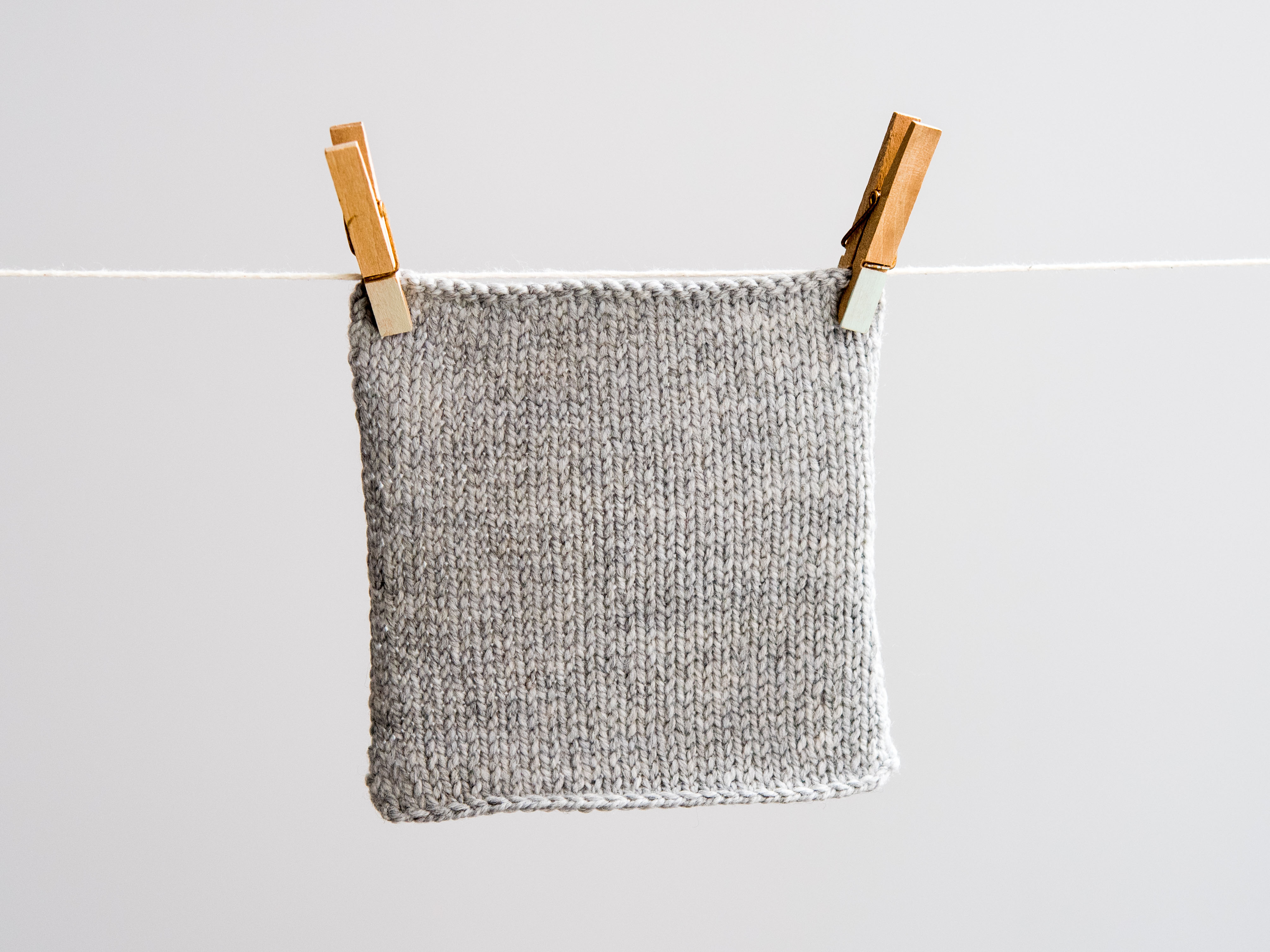Knitting gauge is so important to your knitting, and boy is it a complicated beast sometimes — especially when you’re dealing with knitting gauge adjustment.

Gauge adjustment isn’t just about changing your needle size.
Oh, I know. It pains me to even type those words. But next time you swatch and swatch only to turn up with numbers that still don’t meet your gauge requirements, take a few of these gauge adjustment tips into consideration and see what happens. It might just save you from a knitting temper tantrum.
The basics of gauge
Gauge is the number that determines how big or small your knitted project will turn out, so learning how to make adjustments to your gauge is necessary if you want to avoid ripping out your project and starting all over again.
If you’re a beginner knitter, first check out our post on how to measure your gauge in knitting and see if the basic solution of changing your needle size solves the problem. If it does, awesome! If not, read on, frustrated knitter.
Tension counts
I’d be lying if I told you that simply changing your needle size will solve all your gauge problems. It won’t! Gauge doesn’t just depend on needle size. It also depends on how you, as an individual, knit. Of course, your knitting is just as unique as your fingerprint. How tightly are you holding that yarn in your hand as you knit? Are you a Continental knitter? All these things can factor into your gauge.
And here’s another uncertainty: your knitting can change depending on the day. When I’m stressed, I clutch my yarn so tightly it looks like it might break off. But when I’m knitting at the end of a relaxing day, things flow much more loosely.
Switch up the needle — but not the size
Get ready, because this bit of info is going to blow your mind: Not all knitting needles are the same, even if they’re the same size. That is, a size 10 bamboo needle isn’t the same as a size 10 aluminum needle. That same size can be different depending on the material and the brand. So if you have changed the knitting needle size a bazillion times to try and get the right gauge, why not try switching the needle brand or material instead? If a size 5 bamboo needle isn’t cutting it, try a size 5 aluminum needle.
The other factor in this is that you probably knit differently with different types of needles. Some materials are more slippery than others, so your knitting might be a bit tighter to keep those stitches on there. Swapping the material is not just about the size of the needle, but also changing how you knit with it.
Add rows to your knitting
Sometimes that row gauge is even more troublesome than the stitch gauge. Everything is perfect with your stitch gauge, but you measure the rows and — uh oh. If you’re feeling brave, you can add or remove rows from the pattern to make up for the gauge. I wouldn’t do this with anything that has a lot of shaping, like a sweater, but you can bet I’d try it with something simple, like a rectangular tech case or clutch.

Share tips, start a discussion or ask one of our experts or other students a question.
Already a member? Sign in
No Responses to “3 Things You Might Not Know About Knitting Gauge Adjustment”